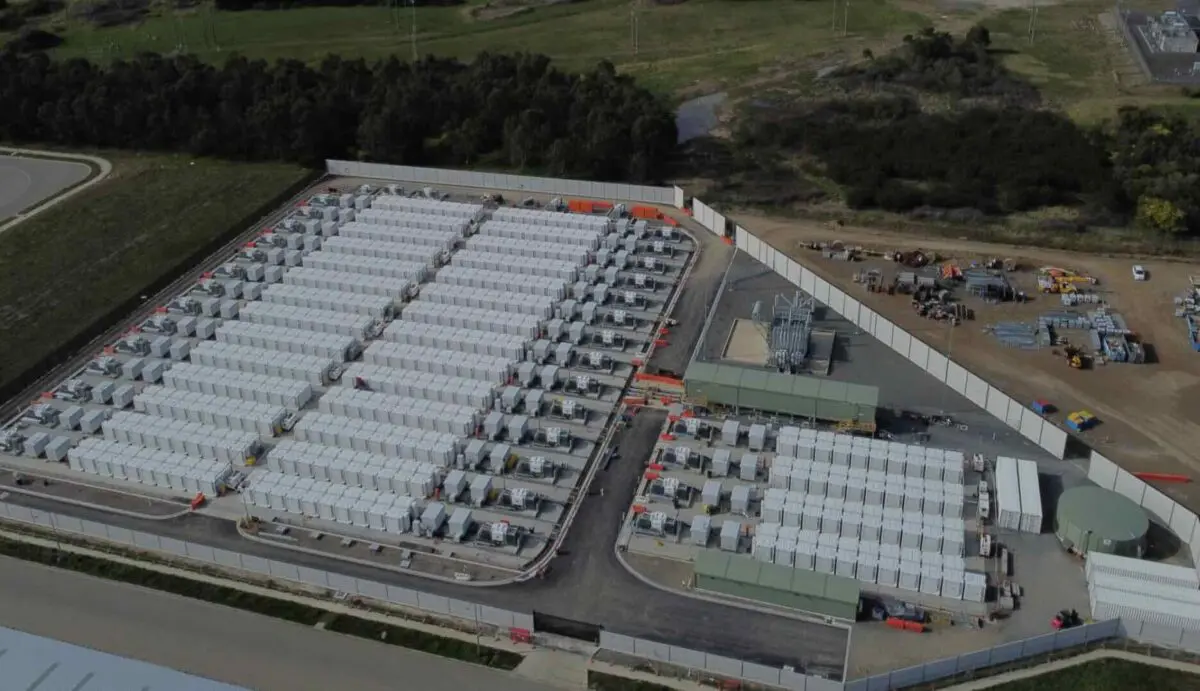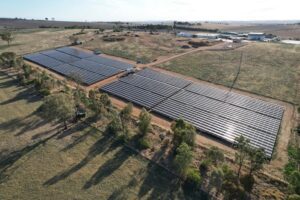The Australian Energy Market Operator is poised to introduce a significant shift in operating protocols that would involve instructing big batteries to stand by on empty to help address periods of extremely low or even negative operating demand.
The proposals have been caucused with industry over the last few months, and are seen as an attempt to avoid more dramatic, and potentially unpopular “solar switch-offs” as the market operator deals with one of the big new challenges of grid management – minimum rather than maximum demand.
The situation has arisen because of the spectacular growth of rooftop solar PV, now totalling more than 21 gigawatts installed on homes and businesses, and still growing rapidly. It highlights the deep and fundamental changes in grid management that are occurring with the switch in technologies.
AEMO has repeatedly warned that minimum demand conditions are emerging as a significant headache, an issue it has reinforced as minimum demand records repeatedly tumble, particularly in spring when rooftop solar output is strong and demand is low because of mild temperatures.
In recent years, AEMO has introduced new inverter standards and protocols that would allow it to order rooftop solar to be switched off if grid demand falls to what it considers to be dangerously low levels, particularly in South Australia – where rooftop solar has already matched native demand on occasions – and in Victoria.
But the solar switch off is considered a blunt instrument, and likely not popular with solar households, and so not with governments either. So the focus has turned to what the growing number of big batteries on the grid can do.
The new protocols affecting big batteries are to be introduced in South Australia and Victoria, where the local grids are considered more vulnerable to falling demand and the growing impact of rooftop PV.
AEMO first approached the market, industry sources tell Renew Economy, with a proposal to invoke “constraints” that would force big batteries to discharge in the morning and stay empty during the middle of the day, ready to charge up and create new demand if required by the operator.
The industry pushed back, arguing that invoking constraints would mean no compensation for lost revenue, and so AEMO has returned with a system similar to the “lack of reserve” (LOR) protocols it uses when it fears there is not enough supply in the grid to meet demand.
In effect, the Minimum System Load (MSL) protocol would operate in a similar vein, but in reverse. In theory, at least, it would mean that big batteries are compensated for the lost trading opportunity if forced to discharge and sit idle, although the regulatory and legal details are still being cleared up.
The MSL would work on a similar number ratings to the LOR. If it reached level 3, that would be the trigger for load creation (rather than shedding under LOR) and the big batteries would be told to charge up, creating demand on the grid that allows AEMO to have multiple levers at hand to deal with any contingencies and keep the lights on.
The new protocols are expected to be introduced as early as this spring. Some in the industry accuse AEMO of being blindsided, or ill-prepared, to deal with the continuing surge of rooftop PV. Others are more forgiving.
AEMO says the potential to use storage in this way – as an alternative to switching off generation – has already been flagged, most recently in the latest ESOO (the 10-year demand outlook known as the electricity statement of opportunities).
And it points out that directions to big batteries have already occurred, most notably in South Australia when it was isolated from the grid last year, which enabled the state grid to operate at a peak of 91.5 per cent renewables despite having no links to other grids.
As AEMO boss Daniel Westerman said in the latest episode of Renew Economy’s Energy Insiders podcast, that is world-leading on a gigawatt scale grid.
It underpins why the likes of Westerman – along with heads of most leading utilities – argue that technologies that rely on the old baseload paradigm will struggle in a grid dominated by variable renewables.
It also highlights why most in the energy industry say that Opposition leader Peter Dutton’s nuclear power plan makes no sense. The amount of rooftop solar is expected to at least double in the next decade, at least triple by the time nuclear reactors could be built.
So, if the system is already producing too much energy now, particularly in the middle of the day how to cram more “baseload” and “always on” nuclear into the grid. Energy minister Chris Bowen on Tuesday says it shows the Coalition simply does not understand how such energy systems work.
In Western Australia, which operates as a separate grid and under a different regulatory regime, AEMO and the state government have already signed contracts with a host of new battery projects that require them to soak up solar in the middle of the day and inject the power back into the evening peaks, when it is needed most.
Those contracts, under the NCESS protocol, will see the construction of a bunch of new batteries, including two of the biggest in the world – a 2.24 GWh battery at Collie being built by Neoen, and another 2 GWh battery being built nearby by Synergy. Another 2.64 GWh battery project has since emerged with a similar mandate in mind.
Contracts to perform those specific functions have yet to appear in the National Electricity Market, although they might – and contracts have been written to support big battery projects, such as the Waratah Super Battery, that act as a kind of giant shock absorber, allowing transmission lines to operate at full capacity.
Some say a market mechanism is essential as part of the anticipated re-design of the market rules to accommodate the realities of a grid dominated by renewables and consumer energy resources.
One industry source told Renew Economy that AEMO is worried that in South Australia and Victoria, the grid will “simply run out of demand”.
That may not be a big problem, in of itself, but if a contingency arises, such as network problems, AEMO needs to have assets in reserve to respond, and it is in those times that this new protocol may be invoked.
Battery storage owners were at first reluctant to have AEMO effectively reach in and control the asset, because of the potential lost revenue, and because many of those batteries are busy “hedging” the portfolios of their owners.
However, “reaching in” is exactly what happens when AEMO issues instructions, as it regularly does, to gas generators in South Australia to switch on at least some minimum capacity to ensure essential grid services are maintained.
There are varying views about what could emerge over the medium term. Some cite the reserve trader mechanism (RERT) that is used to address demand peaks, others refer to the “transitional services agreement” that could be introduced following a recent rule change approved by the market rule maker, the AEMC.
“The service is definitely needed, however a market mechanism is best, like a reserve operating market for generation and load, so the market optimises to provide it.”
“This is the way we are going and working with AEMO on it.”
Joel Gilmore, a market policy expert from Iberdrola Australia, says the transitional services framework could work as an interim measure, but better planning, and accounting for the growth of consumer energy resources, is needed.
“We need AEMO to look ahead to determine what specific assets are necessary to operate the grid, so that investors know what to build to prepare for if or when coal closes,” Gilmore said.
Michael Gatt, AEMO executive general manager operations, said AEMO expects the need to direct batteries will decrease as more batteries are commissioned and as better rooftop solar controls become available
“We’re aware that high contributions of rooftop solar coinciding with certain system conditions needs to be carefully managed to ensure electricity reliability and grid security while managing power system risks,” he said in a statement emailed to Renew Economy.
“In these rare circumstances, AEMO may need to recall transmission outages and direct off grid-scale generation to solve these emergency events.
“In South Australia and Victoria, this response could also include using grid-scale batteries to follow directions to charge at specific times.
“Having batteries ready to increase demand will complement other grid-scale actions to keep the grid secure on those rare, emergency situations. AEMO will work with industry to develop the Improving Security Frameworks to better manage these emerging risks.”








